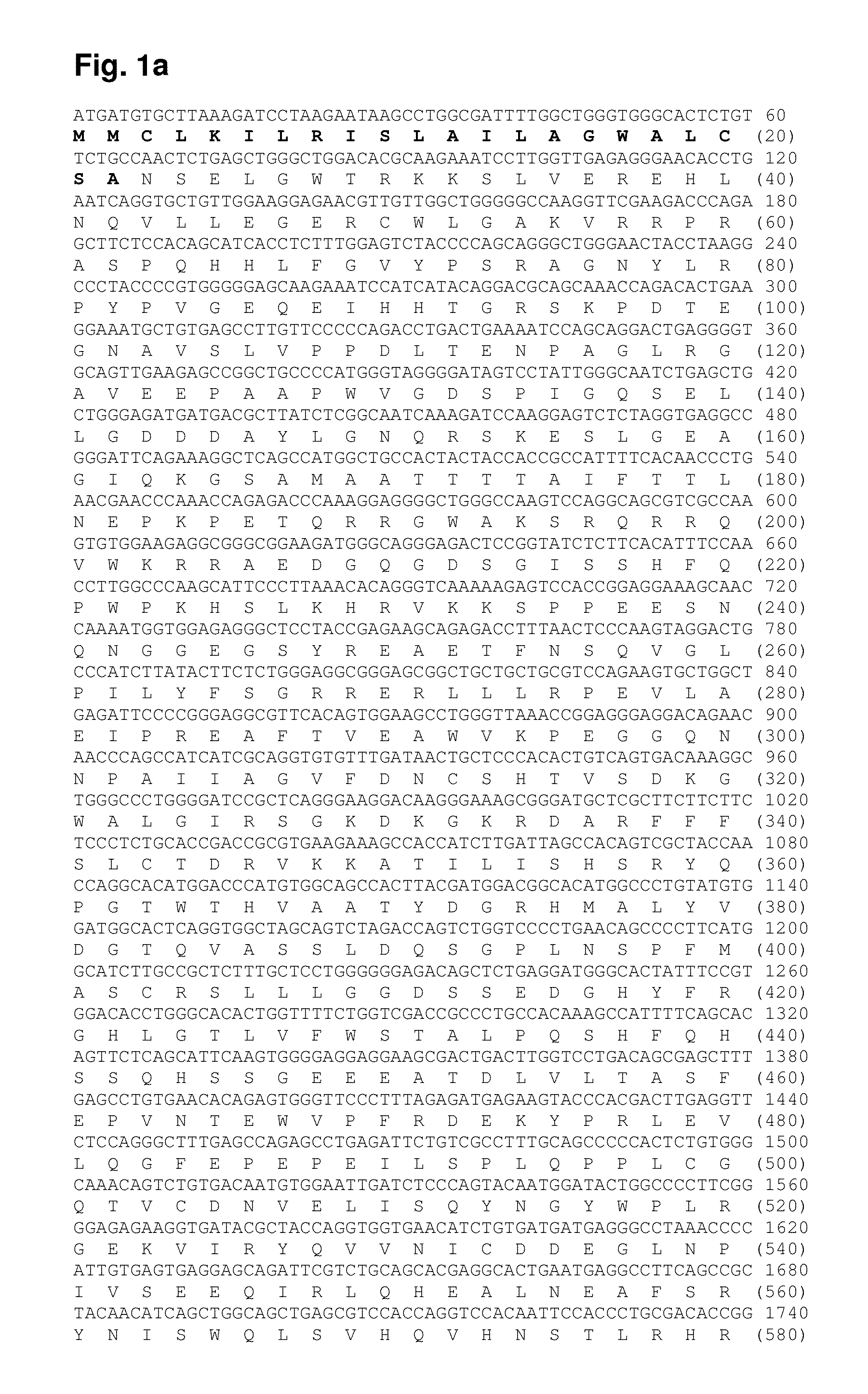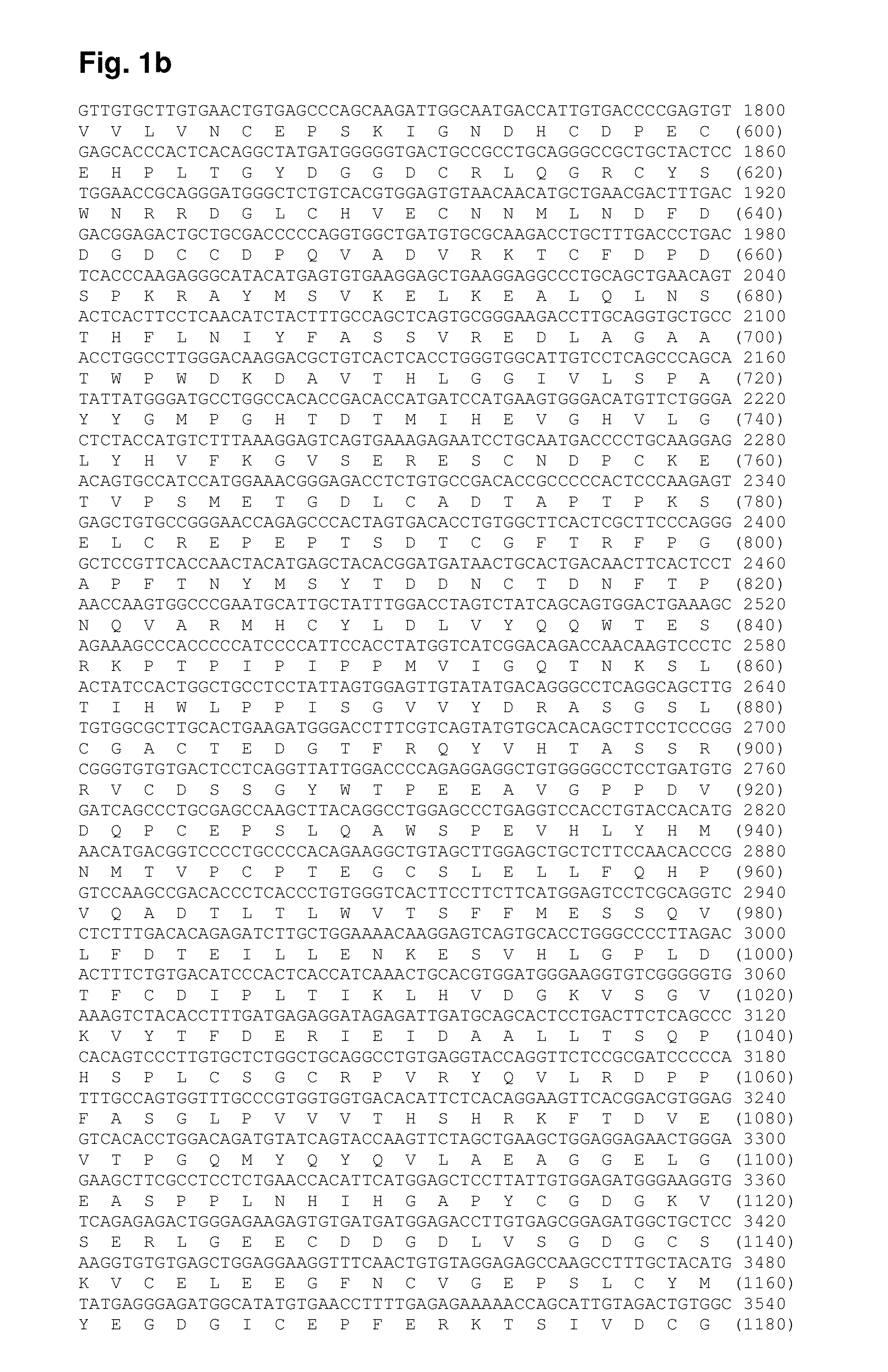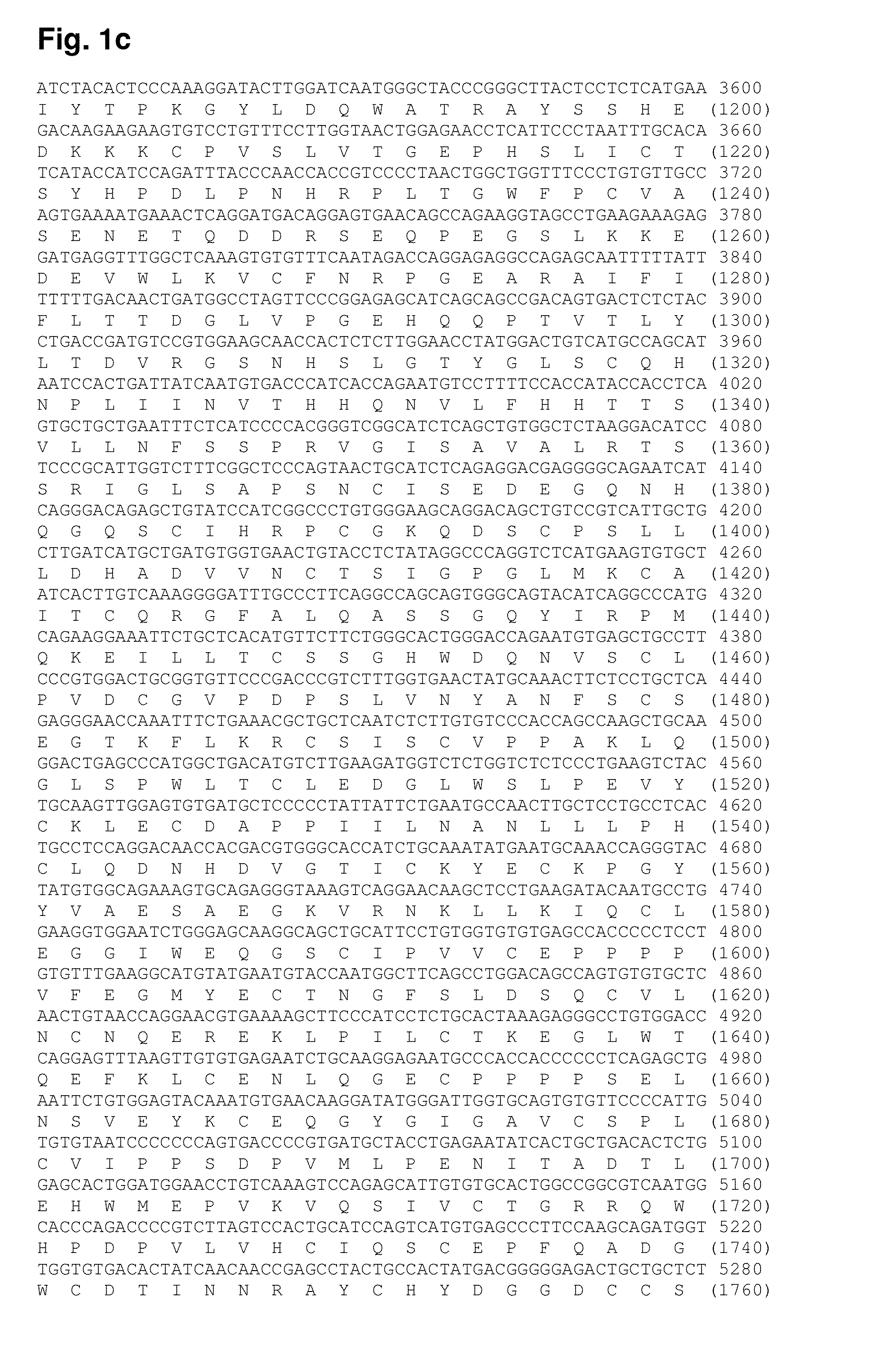Papp-a2 as a marker for monitoring, predicting and diagnosing preeclampsia
a preeclampsia and marker technology, applied in the field of preeclampsia marker, can solve the problems of not having a known cure and affecting both the mother and the unborn child
- Summary
- Abstract
- Description
- Claims
- Application Information
AI Technical Summary
Benefits of technology
Problems solved by technology
Method used
Image
Examples
example 1
[0230]The protein level of PAPP-A2 was determined at different gestation weeks in a serum samples from women without preeclampsia and from women with preeclampsia.
Procedure
[0231]All specimens and reagents were allowed to reach room temperature and mixed thoroughly by gentle inversion before use. Calibrators, controls, and unknowns were assayed in duplicate.
[0232]All serum samples reading higher than the highest calibrator were mixed thoroughly and diluted in the 0 ng / mL PAPP-A2 Cal A / Sample diluent prior to assay.
[0233]For pregnancy serum specimens: Dilute specimens 1:20 with the Cal A / Sample diluent before assay. Do not dilute Calibrators or Controls.
[0234]The following steps were performed:
1. Mark the microtitration strips to be used.
2. Pipette 50 μL of the Calibrator, Controls and Unknowns to the appropriate wells.
3. Add 50 μL of the PAPP-A2 Assay Buffer to each well using a semi-automatic dispenser.
4. Incubate the wells, shaking at a fast speed (600-800 rpm) on an orbital microp...
example 2
Determination of PAPP-A2 Activity by Cleavage of Insulin-Like Growth Factor Binding Protein (IGFBP)-5
[0243]Ligand blotting (Conover et al., 1993, J Clin Invest 91, 1129-37) with radiolabeled IGF-II (Bachem) was used to assay for activity against IGFBP-1 (from HepG2 conditioned medium), rIGFBP-2 (GroPep), rIGFBP-3 (gift of D. Powell), rIGFBP-4 (Austral), rIGFBP-5 (gift of D. Andress), and rIGFBP-6 (Austral). Of the six binding proteins, IGFBP-5 showed complete cleavage (FIG. 10). IGFBP-3 was partially degraded (FIG. 10). This cleavage was independent of the presence of IGF. Experiments were carried out with media from cells transfected with pPA2 or empty vector.
[0244]FIG. 10 shows the activity of PAPP-A2 against IGFBP-1-6. Medium from 293T cells transfected with empty vector (−), or cDNA encoding PAPP-A2 (pPA2) (+) was incubated with each of the six IGFBPs (BP1-BP6), and the activity was assessed by ligand blotting using radiolabeled IGF-II. Complete cleavage of IGFBP-5 is evident fr...
example 3
Samples
[0248]Blood samples were collected longitudinally during pregnancy from a cohort of pregnant women including women with pre-eclampsia (in mild or severe form) and normotensive pregnant women.
[0249]Samples were collected from the 18th week of pregnancy until delivery and divided into the following groups 1) early second trimester (i.e. approximately week 18 to 20), 2) early third trimester (i.e. approximately week 27 to 33 gestation) and 3) near term (i.e. approximately 38 to 40 weeks gestation).
[0250]Women scheduled to delivery at Randers Regional Hospital in Denmark were asked to participate in the project, and blood samples were collected during their pregnancy.
[0251]Women with pre-eclampsia, defined as de novo hypertension >140 / 90 mmHg after the 20th week of pregnancy combined with proteinuria >300 mg / L or ++ on a dipstick were identified. Both were measured on two occasions at least four hours apart.
[0252]Study group characteristics are shown in the Table herein below. Th...
PUM
| Property | Measurement | Unit |
|---|---|---|
| gestation time | aaaaa | aaaaa |
| systolic blood pressure | aaaaa | aaaaa |
| systolic blood pressure | aaaaa | aaaaa |
Abstract
Description
Claims
Application Information
 Login to View More
Login to View More - R&D
- Intellectual Property
- Life Sciences
- Materials
- Tech Scout
- Unparalleled Data Quality
- Higher Quality Content
- 60% Fewer Hallucinations
Browse by: Latest US Patents, China's latest patents, Technical Efficacy Thesaurus, Application Domain, Technology Topic, Popular Technical Reports.
© 2025 PatSnap. All rights reserved.Legal|Privacy policy|Modern Slavery Act Transparency Statement|Sitemap|About US| Contact US: help@patsnap.com



